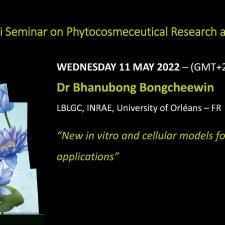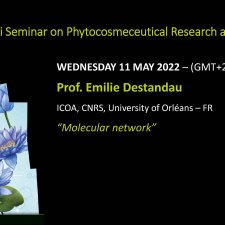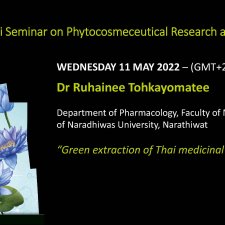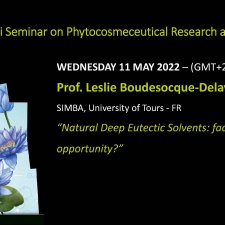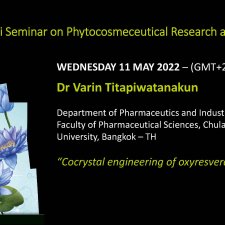Notice
Prof. Yohei Sasaki - Quality Evaluation of Rehmannia glutinosa by Morphological, Genetic and Chemical Study
- document 1 document 2 document 3
- niveau 1 niveau 2 niveau 3
Descriptif
Previously, the medicinal plant, Rehmannia glutinosa, is grouped into two types in Japan. However, previous reports of genetic analysis of R. glutinosa in commercial products suggest the existence of varieties other than these two, and therefore, it is inappropriate to simply classify this medicinal plant into these two varieties. In this current study, we clarified the diversity of R. glutinosa cultivated in Japan on the basis of morphological observation and genetic analysis. We conducted principal component analysis (PCA) of R. glutinosa morphology, including leaf surface color, leaf undersurface anthocyanin coloration, root shape, and the ratio of string root. We also performed (1) sequence-related amplified polymorphism (SRAP) analysis and (2) polymorphism analysis of the TEOSINTE BRANCHED1, CYCLOIDEA, and PCF (TCP) gene region. Our results showed that R. glutinosa roots have various weights, diameters, and lengths, and there are differences between individuals and within an individual immediately after harvest. We found that, catalpol content in the roots tended to increase as root diameter increased. Furthermore, it has been reported that catalpol content decreased with drying, and our results also supported this phenomenon. Based on the above results, we proposed that slicing the roots and rapidly removing water by natural drying is best to obtain dry root with little loss of catalpol content. Our present results provided the information necessary for the stable quality of R. glutinosa roots which is the important part of this medicinal plant for the uses in traditional medicine preparation and phytocosmeceutical applications.
Thème
Dans la même collection
-
Dr Arnaud Lanoue - Agricultural by-products valorization
Winemaking generates different biomolecule-rich byproducts, including pomaces (skin and seeds), lees, as well as other solid wastes like grape canes.
-
Dr Bhanubong Bongcheewin - The Mint family (Lamiaceae) in Thailand- A potential material source for…
Lamiaceae is the large family, consisting of more than 7,000 species worldwide
-
Prof. Emilie Destandau - Molecular network
Specialised metabolites constitute a high valuable resource of bio-active compounds that are highly sought after for pharmaceutic and cosmetic applications. However, plant extracts are very complex
-
Dr Ruhainee Tohkayomatee - Green extraction of Thai medicinal plants
Extraction is a major step to separate bioactive compounds from raw material and medicinal plants, which extracted by the pharmaceutical industry, either with conventional methods or modern
-
Prof. Leslie Boudesocque-Delaye - Natural Deep Eutectic Solvents: fad or real opportunity?
NaDES appeared at the end of the 2010s following the work of Dai et al. Since then, the enthusiasm for these new green solvents linked to ionic liquids has continued to grow.
-
Dr Varin Titapiwatanakun - Cocrystal engineering of oxyresveratrol
Oxyresveratrol (ORV) is a compound found in the heartwood of Artocarpus lakoocha Roxburgh (Moraceae). It has diverse biological and therapeutic activities covering antioxidant, anti-inflammatory,


